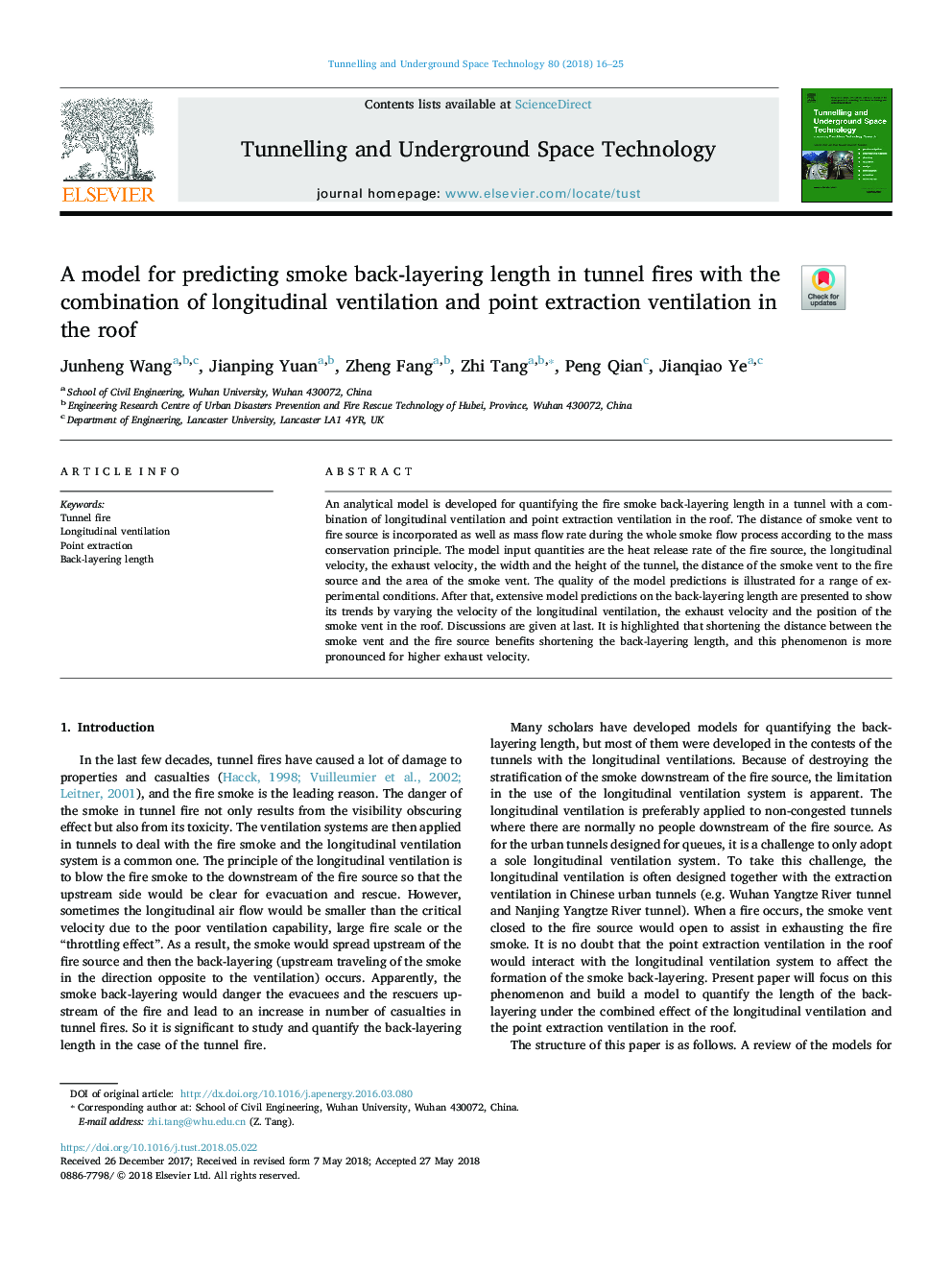| Article ID | Journal | Published Year | Pages | File Type |
|---|---|---|---|---|
| 6782139 | Tunnelling and Underground Space Technology | 2018 | 10 Pages |
Abstract
An analytical model is developed for quantifying the fire smoke back-layering length in a tunnel with a combination of longitudinal ventilation and point extraction ventilation in the roof. The distance of smoke vent to fire source is incorporated as well as mass flow rate during the whole smoke flow process according to the mass conservation principle. The model input quantities are the heat release rate of the fire source, the longitudinal velocity, the exhaust velocity, the width and the height of the tunnel, the distance of the smoke vent to the fire source and the area of the smoke vent. The quality of the model predictions is illustrated for a range of experimental conditions. After that, extensive model predictions on the back-layering length are presented to show its trends by varying the velocity of the longitudinal ventilation, the exhaust velocity and the position of the smoke vent in the roof. Discussions are given at last. It is highlighted that shortening the distance between the smoke vent and the fire source benefits shortening the back-layering length, and this phenomenon is more pronounced for higher exhaust velocity.
Related Topics
Physical Sciences and Engineering
Earth and Planetary Sciences
Geotechnical Engineering and Engineering Geology
Authors
Junheng Wang, Jianping Yuan, Zheng Fang, Zhi Tang, Peng Qian, Jianqiao Ye,
